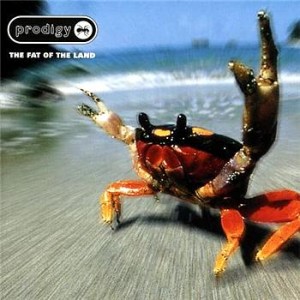Beat Generation: A (Brief, Brief) History Of Electronic Music
posted in: Music News
 Welcome to Beat Generation. With this column, we’re going to try and cover as many strains of electronic music as we can, from house to techno, from ambient to glitch. We here at OurStage have noticed a resurgence of electronic music in pop music in the past few months. It seems appropriate then that for starters, we’re going to do a quick and dirty overview of the relationship electronic and pop music have had over the years, from the ’80s to today.
Welcome to Beat Generation. With this column, we’re going to try and cover as many strains of electronic music as we can, from house to techno, from ambient to glitch. We here at OurStage have noticed a resurgence of electronic music in pop music in the past few months. It seems appropriate then that for starters, we’re going to do a quick and dirty overview of the relationship electronic and pop music have had over the years, from the ’80s to today.
Well, it’s about time. Electronic finally broke into the mainstream in a big way. Disagree? Have you listened to the radio lately? Did you see that Deadmau5 had a music video on MTV? It’s been a pretty long road from a genre that started as an obscure offshoot of rock to near total pop ubiquity.
You can argue as to when electronic music first came to be until the sun goes down but it’s clear that pop and electronic had their first real meaningful interaction during the ’80s, the era of big hair, Reganomics and synth. Gary Numan’s “Cars”, released in 1979, started off this trend for most listeners. The everpresent synth line of the song fits in well with the verse chorus verse structure and also worked as a bouncy instrumental counterpoint to the feelings of existential disconnect and uncertainty that Numan presents in his lyrics. Notable releases from this era included landmark singles from the Eurthymics, The Human League, New Order and Madonna. The popular electronic sound of the ’80s was rooted firmly to rock and disco traditions.
had their first real meaningful interaction during the ’80s, the era of big hair, Reganomics and synth. Gary Numan’s “Cars”, released in 1979, started off this trend for most listeners. The everpresent synth line of the song fits in well with the verse chorus verse structure and also worked as a bouncy instrumental counterpoint to the feelings of existential disconnect and uncertainty that Numan presents in his lyrics. Notable releases from this era included landmark singles from the Eurthymics, The Human League, New Order and Madonna. The popular electronic sound of the ’80s was rooted firmly to rock and disco traditions.
Now we’ll move onto the ’90s. The pop/electronic flirtation during this decade was apparent but more fleeting. The hot sound was coming out of the UK; Big Beat and Jungle were dominating the airwaves across the pond and it was only a matter of time before America got a taste of it as well.

Fatboy Slim enjoyed enormous and lasting success for the latter part of the decade into the early aughts. Groups like the Prodigy, the Chemical Brothers and the Crystal Method were at their popular peak, winning rock listeners with songs featuring heavy guitar. The Prodigy were especially notorious, releasing the quick-to-be-banned video for their single “Smack My Bitch Up” and signing to Madonna’s Maverick Records.
And then we move on to the Aughts. The current new trend of trancey, dancey electro in the Top 40 is a little different, thanks in large part to the emergence of Lady Gaga. Her debut album, ‘The Fame, didn’t blow up. It was a seismic event that shook the musical landscape around it. This marked a move in dance music to embrace the pulse and beat of electro and techno over the influences of hip hop and R&B which were the previous standard.
While past trends in electronic music were driven by scenes, the current dance trend in pop music is a reaction to what the kids are into. In business and in pop music, aping the competition is not considered unoriginal or frowned upon; for many, it’s the only way to survive. Everywhere you look in contemporary pop music, there’s examples of the co-opting of electronic music. Look at Christina Aguilera’s stylistic makeover. Consider the difference between Katy Perry’s first and second albums. Think about Ke$ha and her entire career up to this point. Even Britney Spears is jumping on the bandwagon. While putting together her new album, Spears was in London working with dubstep producer Rusko. In a genre known for emphasizing the heaviest and dirtiest of bass lines and an uncompromising sound, the collaboration left some people scratching their heads. The first song leaked from that album, “Hold It Against Me”, features unmistakable dubstep touchstones, including the infamous “wobble,” or a shuddering electric bass line. While this may have some purists calling foul, it’s proof positive that electronic has not only arrived, but from the dance floor to the airwaves, it has already conquered the world.
